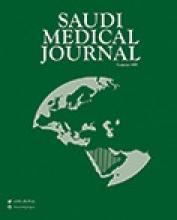Abstract
OBJECTIVE: To investigate the prevalence of antibodies to Bartonella henselae (B.henselae) and Bartonella quintana (B.quintana) among children from central and northern Jordan.
METHODS: Sera from 482 children were randomly collected from referenced governmental hospitals in the central and northern parts of Jordan during the period between January 2001 to March 2003. An indirect immunofluorescent assay was used to determine serum antibody titers to B.henselae and B.quintana. Sera that were reactive at a dilution >/-1:64 were considered positive. In addition, blood from 20 cats belonged to children with high B.henselae titers were tested using polymerase chain reaction.
RESULTS: Out of the 482 serum samples examined, 53 (11%) and 20 (4.1%) had positive antibody titers for B. henselae and B.quintana. Bartonella henselae was isolated from 4 cats that belonged to 3 children with high antibody titers to B.henselae-IgG. The seroprevalence of IgG antibodies to B.henselae was significantly higher (P<0.05) in children aged 7-10-years than in younger or older ones. Having a cat in the household and having a history of cat scratches or bites were strongly associated (P<0.01) with seropositivity to B.henselae-specific IgG. Cats ownership and history of cat scratches or bites had no impact on the prevalence of B.quintana. Seropositivity to B.henselae-specific IgG was significantly higher (P<0.01) in children from northern Jordan than in children from central Jordan.
CONCLUSION: This study substantiates the presence of B.henselae in Jordan, documents the seroreactivity to 2 Bartonella antigens, and suggests that cat ownership and history of cat scratches or bites are important epidemiological risk factors for B.henselae infection in Jordan.
- Copyright: © Saudi Medical Journal
This is an open-access article distributed under the terms of the Creative Commons Attribution-Noncommercial-Share Alike 3.0 Unported, which permits unrestricted use, distribution, and reproduction in any medium, provided the original work is properly cited.






